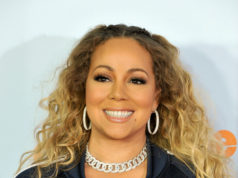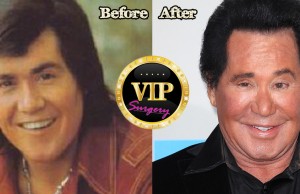The port continued to flourish and Bristol became one of England's principal ports. Bristol's location on the west side of Great Britain gave ships an advantage in sailing to and from the New World. Who was Edward Colston and why was his Bristol statue toppled? Bristol. Dont say it has nothing to do with me. Excellent uncongested motorway & rail links Latest News . But twenty of those ports received more than eight million Africans. It comes after Black Lives Matters protesters dramatically tore down a statue to slave trader Edward Colston in Bristol, and dumped it into the docks. [3] Bristol's port facilitated, and benefited from, the transport of half a million slaves. Jobs and the prosperity of the city were tied up with the trade, a point the citys powerful commercial lobby, the Society of Merchant Venturers, made again and again. The empty plinth in the city centre surrounded by protesters banners. This singular discovery brought slavery for Massive Industrial labour requirement in the west African Coast natives. It is therefore estimated that merchants in Bristol were responsible for more than 500,000 enslaved African people being shipped to the Caribbean and North America. Professor Madge Dresser who is poised to join a new commission set up by the city council to examine Bristols past said the Victorians settled on Colston due to his apparent record of philanthropy. The hotel is situated next to Connaught . By 1800, 78,000 people lived and worked in Liverpool. [9] Some buildings and institutions such as schools were named after their slave trading benefactors; for example, Colston Hall, Colston Girls School and Colston Primary School (renamed recently to Cotham Gardens Primary School) were named after Edward Colston, Bristol's most famous philanthropist, a Bristol-born slave trader, senior manager of the Royal African Company and member of the Merchant Venturers Society. See Memoir of Capt Crow. WE ALL REJECT, DESPISE AND CONDEMN BRISTOLS PROFITEERING FROM THE SLAVE TRADE. The Georgian house was home to the Pinney family for a while and today is furnished as if they still live there. The trade directly stimulated the growth of racialist theory in order to justify the enslavement of Africans. BLACK LIVES MATTER! The University of Repair (UoR) is a yearlong collaborative project with the Museum of London Docklands and Decolonising The Archive. [9] By the 1730s, an average of 39 slave ships left Bristol each year, and between 1739 and 1748, there were 245 slave voyages from Bristol (about 37.6% of the whole British trade). Bristol's history of slavery to be explored. When Pinney moved to Bristol, he brought two black attendants with himFanny Coker and Pero Joneswho were both bought by Pinney in 1765. From Bristol, down the River Avon and out to the sea was a difficult journey. Black Lives Matter: Statue to Guy's Hospital founder could be torn down Brief History of Bristol as a Port Bristol Floating Harbour The late seventeenth and eighteenth centuries saw a series of wars through which the British established their control over the Atlantic trade and much of the Caribbean and North America. The next chapters in this section show how wide this impact really was on the city and on those who lived and worked in the surrounding areas. Although Spain and Portugal had originally dominated the . The city of Liverpool swiftly overtook London and Bristol to become the major British slave port of the 18th century. There are three references to the slave trade in the Bristol docks area. It features the antislavery movement as the beginning of a display on modern public protests including the Bristol Bus Boycott, treating the abolition campaign as the start of a British tradition of society campaigning. Find out what's on. Some groups, notably the Society of Friends (Quakers), took up an anti-slavery stance on religious grounds as early as 1760. By the late 1730s Bristol had become Britains premier slaving port. Campaigners have argued for years that his connections with slavery mean his contribution to the city should be reassessed. Almost everyone in the debate agrees that the structural racism and inequalities that hold back so many non-white people in the city will prove harder to tear down than Colstons statue. This trail explores a handful of the city's seemingly everyday sights to uncover how Bristol's slavery past still permeates life here 500 years on. Bristol merchandise, specially aimed at the Guinea trade including guinea guns, brassware, alcohol, cloth, hats and fancy goods could profitably be sold to local African traders. King George Pepple-1 of Grand Bonny was invited by her plantar-genic Queen Victoria Her Britannic Government for the Royal African Merchants Company in 1873 for the second centennial annual celebration. When not enough servants opted for this scheme, more sinister methods were used. Although Colston was born in the city in 1636, he never lived there as an adult. As soon as the monopoly was broken, Bristol commenced its participation, though it is thought that illegal involvement preceded this. This was followed by . Some especially observers abroad have expressed surprise that a slave trader was still standing in a supposedly progressive city such as Bristol, with a plaque that made no mention of the 84,000 people he enslaved and instead declared the monument had been erected by the citizens of Bristol as a memorial of one of the most wise and virtuous sons of their city. This racialist tradition survived after slavery ended and endures in some quarters into the present day. Historians and activists had been campaigning to remove the statue for decades. Explore in 3D: The dazzling crown that makes a king. Bristol was a wealthy city and trading port before its involvement with the transatlantic slave trade. Tunnels, Caves and Underground rock shelters - The Bristol Blog 26/10/2020. Bristol ships also supplied these British colonies with a wide range of goods for the plantations, including guns, agricultural implements, foodstuffs, soap, candles, ladies boots and Negro cloaths for the enslaved. Full induction and training is provided. There was one act of criminal damage it was focused. But they have been completely disregarded and black voices in the city havent been heard.. Meanwhile, thousands of Black Lives Matter protesters, backed by Oxford city council, called for the removal of a memorial in Oriel College to British imperialist Cecil Rhodes, who supported apartheid-style measures in southern Africa. The slave trade brought in much wealth and became embedded into civic life in these areas. In 1680 he joined the Royal African Company (RAC) company that had a monopoly on the west African slave trade. There were civic processions. It features a section on the legacies of the slave trade on some of Bristol's public institutions. Slave trader was a member of the Royal African Company which had a monopoly on the west African trade in the late 17th century. Ask any black person here today and they will tell you about racism., It is time to take a stand together and fight this racist system, urged another woman in the crowd, who joined him on the dusty plinth. John and Charles Wesley, the founders of Methodism, declared themselves against the slave trade in the late 1770s. [26], Residents in Bristol could financially benefit from the slave trade in a myriad of ways. The secret mine that hid the Nazis' stolen treasure. More personal arguments for abolition came from Olaudah Equiano, who planned to visit Bristol in 1793. Enjoyed this account. Bristol Port are on the search for new Port Operations apprentices to join the team. Whilst history shouldnt be forgotten, these people who benefited from the enslavement of individuals do not deserve the honour of a statue. Summary of Individual | Legacies of British Slavery The merchants were organised as a group in the Merchant Venturers Society. Edward Colston, who lived from 1636 to 1721, was something of a British Carnegie in his day, using his fortune to fund almshouses for the poor, hospitals, schools, and other . All rights reserved. Up to this point the slave trade had not been a major factor in either of these trading relationships. Many ships followed, such as the Southwell frigate pictured here, which made two slave voyages from Bristol in 1746 and 1748. Mapping the legacy of slavery in London's Docklands. The number of voyages varied, from over 50 each year in the 1730s, to less than 8 a year in the 1800s. In Bristols muddy dock, the largest ships could only leave on the highest tides when there was enough water for the ships to float. [6][4] What is thought to have been the first "legitimate" Bristol slave ship, the Beginning, owned by Stephen Barker, purchased a cargo of enslaved Africans and delivered them to the Caribbean[7][self-published source?]. [12] Bristol ships traded their goods for enslaved people from south-east Nigeria and Angola, which were then known as Calabar and Bonny. Some of these continued well into the 21st century., Lawyer Marti Burgess, who chairs the Black South West Network and the St Pauls carnival, recalled that in the 1980s her brother used to have to walk more than three miles from his school to the statue in a procession to mark Colstons birthday. Colstons most ardent local supporter, councillor Richard Eddy who resigned as deputy leader of the Conservative group after brandishing a gollywog doll in 2001 claimed Colston was a hero to generations of Bristolians. [11], The triangular trade was a route taken by slave merchants between England, Northwest Africa and the Caribbean during the years 1697 to 1807. However, some British merchants continued to invest in the slave trade through Spanish, Portuguese and American traders. The Kings of this region seems to have formed partnership with with King Henry of England and one of their heir was trained in England for Linguistic just earlier before then the Portuguese did same first. These may be the first of many controversial statues to end up in museums, with carefully curated displays putting them in context rather than being uncritically displayed in streets and squares. Protesters throw the statue of Edward Colston into Bristol harbour. But other factors played a part, economic and social as well as philosophical. The UK Research and Innovation (UKRI) citizen science scheme is funding the project with a 290,000 grant. [14] This meant that the Bristol economy was intrinsically linked to slave-produced Caribbean goods such as sugar, rum, indigo and cocoa. London: Centre of the Slave Trade - Historic England People have been trying to get it taken down the right way for decades. Bristol West India merchant, partner in Gibbs & Bright, cousin of William Gibbs of Tyntesfield (1790-1875), who was one of his executors. Job Type: Driver - LGV C+E Yard Shunter 10am-8pm. Millennium Square. The day Bristol dumped its hated slave trader in the docks and a nation began to search its soul When Edward Colston's statue was toppled, colonialism and national memory became a part of the . His works in the city included money to sustain schools, almshouses and churches. Captain John Africa was famous for centuries, through his successions or descents of a black Captains served under Royal Merchants Company. British Slave Ports | Schoolshistory.org.uk Local shipbuilding yards in Bristol, such as the one shown here, would have been involved in fitting out ships for the trade. M Shed. The Georgian House, 7 Great George St. Photo by: Antonia Odunlami. Scholars have identified 179 such ports, where more than 11 million Africans were transported by European slavers.
Representation Of Disney Princesses In The Media,
Easiest Hand To Make In Mahjong,
Articles B








